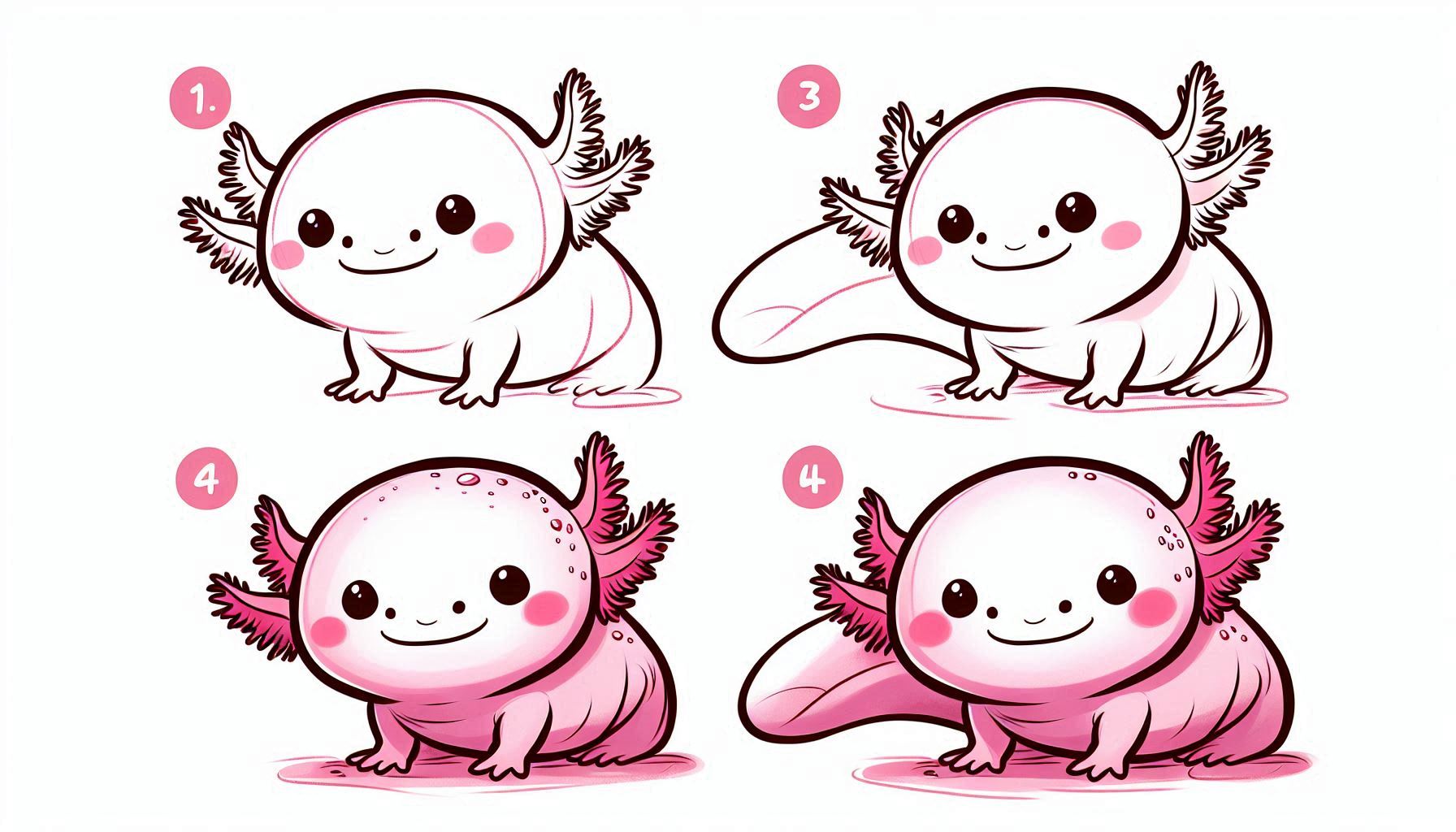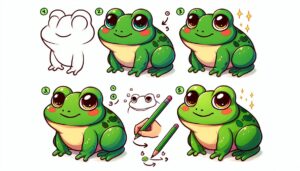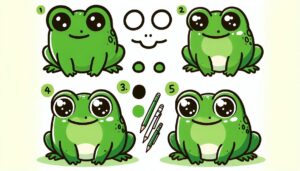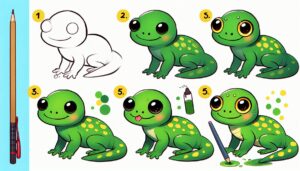Creating a masterpiece of an axolotl is a thrilling and one-of-a-kind artistic adventure. Renowned for its charming appearance, delicate gills, and lively nature, the axolotl is a captivating choice for artistic inspiration. In this guide, we’ll take you through the process of drawing an axolotl, paying close attention to its unique characteristics and allowing for some artistic creativity. Let’s embark on an exciting and imaginative drawing journey!
The Fascination of Axolotl Anatomy
Axolotls have some really interesting and adorable characteristics, like their delicate external gills and their warm, welcoming eyes. Understanding the unique features of these creatures, from their reptilian body structure to their fascinating respiratory system, will enhance the accuracy and appeal of your artwork. By highlighting these qualities, one can truly appreciate the allure of this captivating amphibian.
The Joy of Capturing Feathery Fins and Vibrant Hues
When creating a drawing of an axolotl, it’s important to capture the vibrant colors and unique gills that make it stand out. This can be an enjoyable and vibrant challenge, improving your artistic abilities and your knack for working with different textures. The more skillfully you capture these elements, the more vibrant and authentic your axolotl drawing will appear.
Discovering the Fascinating World of Axolotls Through Art
Axolotls are not only cute, but they also possess fascinating adaptations that allow them to thrive in their aquatic environment. Exploring the unique appearance and behavior of axolotls can be a fascinating experience. This theme highlights the educational aspect of art and the opportunity to explore new aspects of amphibian life through creative expression.
Steps: How to Draw an Axolotl
First, start by sketching the fundamental outline.
Begin by sketching the fundamental form of the axolotl’s body. Start with a curved, stretched-out form for the body. When photographing axolotls, it’s important to capture their unique body shape. They have a soft, lizard-like body with a slightly rounded tail. Create a smaller, rounded shape at one end for the head.
Step 2: Incorporate the Head and Facial Features
Place the head at one end of the body, shaping it with a rounded, slightly triangular form. Place two large, round eyes on either side of the head. Axolotls have friendly, expressive eyes that can be enhanced by making them big and bright. Create a petite, gently arched line to form the mouth, perfectly placed at the midpoint of the head.
Step 3: Add the delicate gills
The external gills of an axolotl are truly remarkable. Illustrate three sets of delicate gill filaments protruding from both sides of the head. These filaments should have a gentle, flowing appearance, resembling delicate, feathery structures. Ensure that they are evenly spaced and gently curved to maintain their natural look.
Step 4: Now it’s time to attach the legs and tail.
Begin by sketching the legs of the axolotl, starting with the front legs. They have a compact and sturdy build, with four tiny, webbed toes on each foot. When drawing the hind legs, make them a bit larger and position them a little further back. Axolotls also possess a gracefully curved tail, thus one should sketch a rounded, tapering form that extends from the posterior of the body.
Step 5: Perfecting the Form
Opt for a darker pencil or pen to carefully trace over your sketch and enhance the axolotl’s shape. Refine the contours of the body, head, legs, and tail. Make sure the gills are clearly visible and the legs are in the right proportion. Remove any unnecessary guidelines or overlapping lines to tidy up your drawing.
Step 6: Enhance the Visual Appeal
Axolotls have a smooth skin that has a subtle texture. Add some delicate shading to the body and legs to capture the smoothness of the skin. Include subtle details to depict the natural creases and contours of the skin. Add some light shading to enhance the gills and give them a more realistic, three-dimensional appearance.
Step 7: Add some color to your axolotl.
Now it’s time to add some vibrant hues to your axolotl! Opt for gentle pastel hues like soft pinks, peach, or light browns for the body, complemented by slightly deeper shades for the gills and intricate details. When it comes to axolotls, it’s best to opt for soft and blended colors to complement their light, pastel appearance. Consider incorporating subtle shading techniques to add depth and dimension to your drawing. Take note of the different areas of light and shadow in order to bring more vibrancy and realism to your axolotl drawing.
Theme 1: The Fascination of Axolotl Anatomy
Exploring the anatomy of an axolotl through drawing allows you to appreciate its distinct features, such as its delicate gills and endearing eyes. Understanding these features enables you to create a comprehensive and precise representation. Recognizing the beauty of axolotl anatomy can help improve your artistic abilities and deepen your understanding of these fascinating creatures.
Theme 2: The Joy of Capturing Delicate Fins and Vibrant Hues
The vibrant colors and delicate gills of an axolotl offer an exciting and lively challenge for artists. Mastering the art of capturing these details requires a touch of creativity and a keen eye for unique textures and hues. Find joy in the process of bringing these vibrant elements to life in your artwork.
Theme 3: Discovering the Fascinating World of Axolotls Through Art
Exploring interesting aspects of amphibian life, axolotls captivate with their aquatic lifestyle and distinctive appearance. Exploring different colors and textures can make your artwork visually engaging and educational. This theme emphasizes the excitement of exploring different aspects of amphibian life through art.
In summary
Creating a drawing of an axolotl is a wonderful and captivating activity that enables you to depict the distinct characteristics and lively hues of this adorable amphibian. By following the steps in this guide and paying close attention to its anatomy, features, and colors, you can create a detailed and captivating axolotl drawing. Embrace the joy of the artistic process and let your imagination soar as you create a masterpiece on paper!
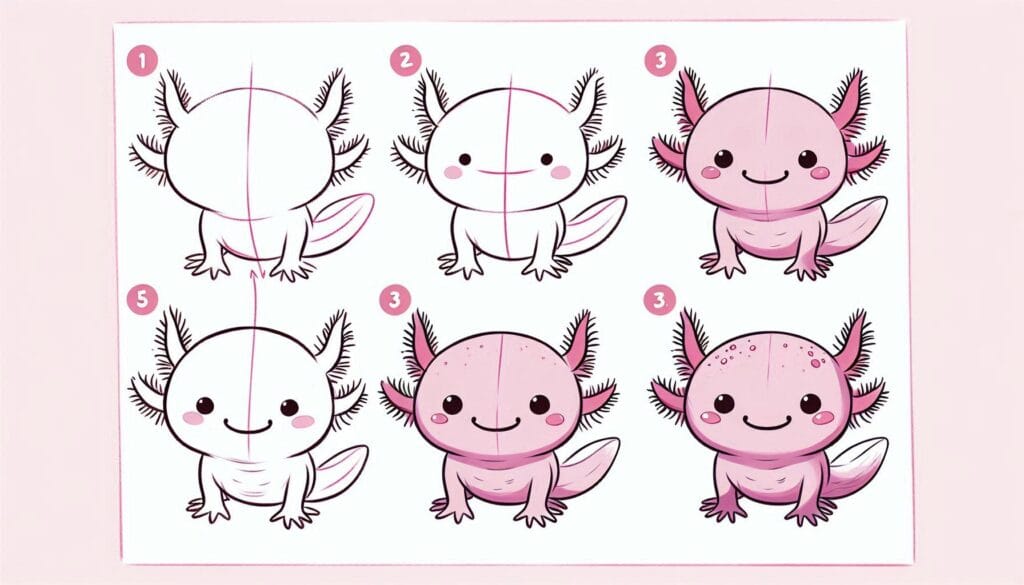
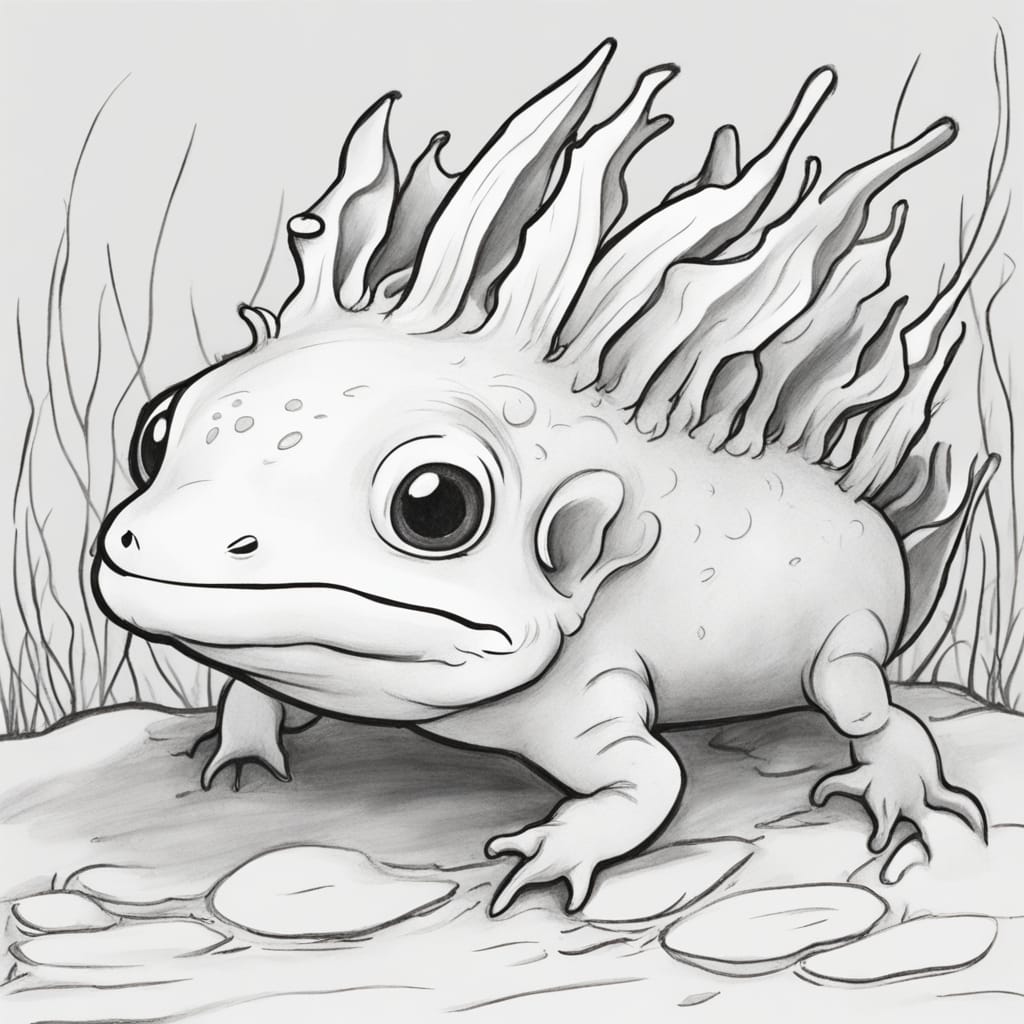
For an easy guide on how to draw a salamander, you can find clear step-by-step instructions here. This fun tutorial encourages young creators to enhance their abilities while diving into the captivating realm of amphibians!

